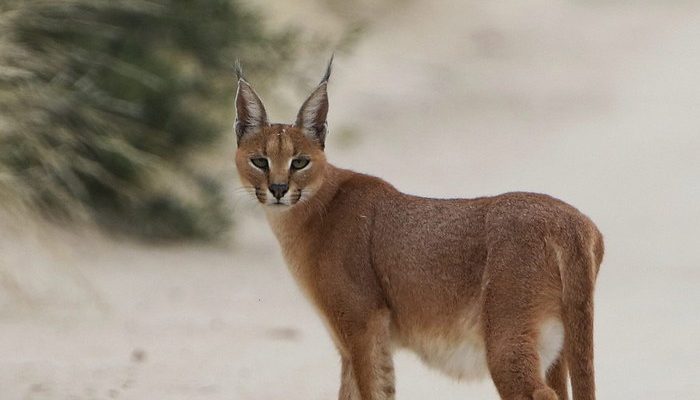Our planet is brimming with a vast array of mesmerizing creatures, each playing its unique role in maintaining the ecological balance. Every animal species, no matter how scarce, has an intrinsic value that enriches our world. So, why is it important to protect rare animals?
Firstly, these animals, regardless of their numbers, have taken eons to evolve. Their loss would mean a missing puzzle piece from the grand mosaic of life. Additionally, rare animals often serve as indicators of ecosystem health. Their decline can signal deeper environmental issues that might later affect more abundant species and even humans. Furthermore, many of these animals have cultural or spiritual significance for indigenous communities, and their extinction can mean the loss of an essential aspect of their heritage. Lastly, from a purely scientific perspective, these animals might hold answers to some of our most pressing questions or offer new insights into the world of biology.
With all this said, we invite you to explore the 10 most rare and stunning animal species that have captured imaginations and evoked wonder.
10 – Valais Blacknose
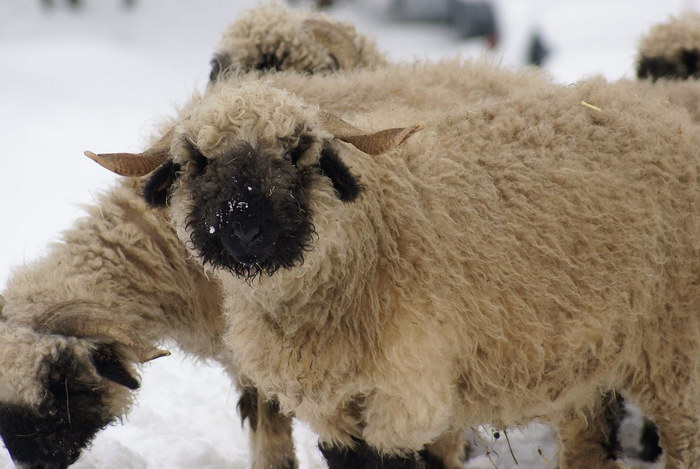
The Valais Blacknose sheep hails from the Swiss Alps and is undoubtedly one of the most striking sheep breeds you’ll ever encounter. With their spiral horns, distinct black patches on their noses, ears, eyes, and knees, they often appear to be donning masks. But there’s more to this breed than its striking appearance.
Originating in the Valais region of Switzerland, these sheep are well-adapted to high altitudes and rugged terrains. They have a unique thick, woolly coat that protects them against the harsh alpine weather. Apart from being breathtakingly beautiful, this wool is also utilized for various textiles, often fetching a hefty price in the market.
Their genial disposition makes them popular among farmers and breeders. They’re known to be particularly friendly and approachable, making them great for families and petting zoos. But, their popularity goes beyond their charm. Valais Blacknose sheep are also known for their meat, which is considered to be of superior quality.
Over the years, their distinctive looks have led to a surge in their popularity, particularly among breeders outside of Switzerland. However, this has also led to concerns about maintaining the purity of the breed, making it essential for potential breeders to be well-versed in their lineage and breeding practices.
09 – Potoo
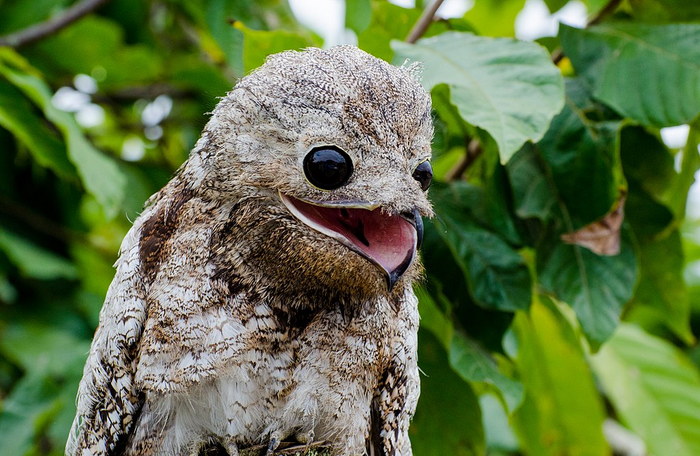
Hidden deep within the forests of Central and South America, the Potoo is a bird that seems to have jumped straight out of a fantasy book. With enormous, wide-set eyes and an uncanny ability to blend seamlessly into tree branches, this bird is a master of disguise. But why such a peculiar appearance?
The Potoo’s unique look serves a critical purpose – camouflage. During the day, this nocturnal bird remains motionless, perfectly mimicking a broken tree branch. This ingenious tactic helps them evade keen-eyed predators. By night, their large eyes aid them in hunting insects in the dim light.
Their haunting, eerie calls echoing through the forests have led to numerous local legends and folklore. Many indigenous communities believed these calls were spirits or otherworldly entities. While its vocalizations may be unsettling to some, they are, in reality, mating or territorial calls.
While they are spread out over a large range, their elusive nature means there’s still much to learn about these enigmatic forest dwellers. Conservationists and bird enthusiasts have been working to study and ensure the preservation of their habitats, as deforestation poses a significant threat.
08 – Rosefinch
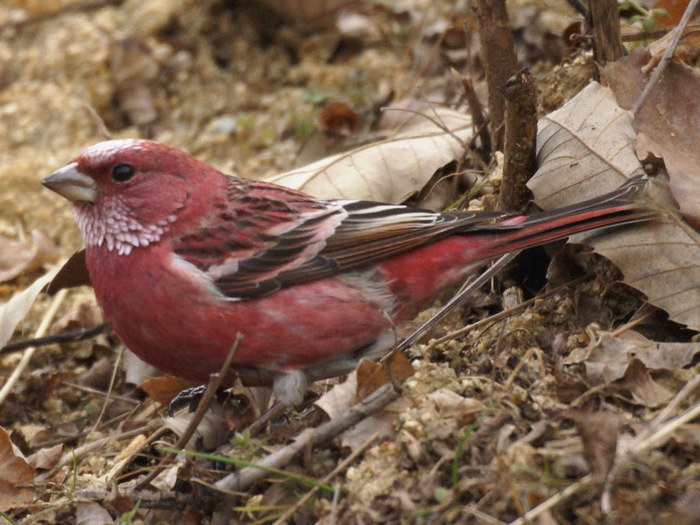
A splash of vibrant color amidst verdant greens, the Rosefinch is a sight to behold. Primarily found across Asia and Europe, this bird belongs to the finch family and stands out because of its radiant, rosy-red hue.
Different species of the Rosefinch offer a spectrum of colors, from soft pinks to brilliant crimsons. Their melodious songs are as captivating as their appearance. Often, their tunes are sweet, short, and reminiscent of the tunes sung by canaries. This melodious attribute has made them a favorite among bird watchers and enthusiasts.
Diet-wise, they primarily feed on seeds, but during breeding season, they’ll incorporate insects into their diet, providing essential nutrients to their offspring. Their choice of habitat varies, but they’re commonly found in shrubby areas, edges of woodlands, and even gardens.
While some species of Rosefinch are widespread, others are confined to limited areas. This makes them vulnerable to habitat destruction and changes in their environment. Conservation efforts are in place to monitor their numbers and ensure that these feathered jewels continue to grace our world with their presence.
07 – Ayam Cemani
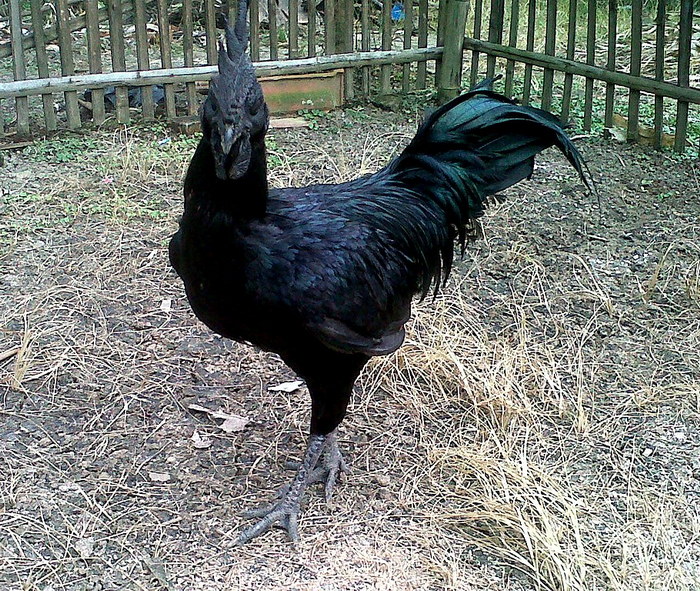
Draped entirely in black, the Ayam Cemani is no ordinary chicken. Hailing from Indonesia, every part of this bird, from its feathers to its bones and even its internal organs, exhibits a deep, dark shade due to a genetic condition called fibromelanosis. But, the mystique surrounding this bird isn’t just skin deep.
In Indonesian culture, the Ayam Cemani is often associated with power and mysticism. Some believe the bird holds magical powers, leading it to be used in certain rituals. Beyond the folklore, it’s a creature that sparks intrigue among poultry enthusiasts and breeders worldwide.
The bird’s eggs, interestingly, are cream-colored, offering a striking contrast to its inky-black appearance. Though not particularly known for its taste, the chicken’s rare and unique look makes it highly sought after, sometimes fetching high prices in the market.
As more exotic poultry enthusiasts have developed an interest in the breed, efforts have been made to conserve and raise awareness about its uniqueness. After all, it’s not every day that one encounters a chicken that looks as though it’s been dipped in ink!
06 – Arctic fox
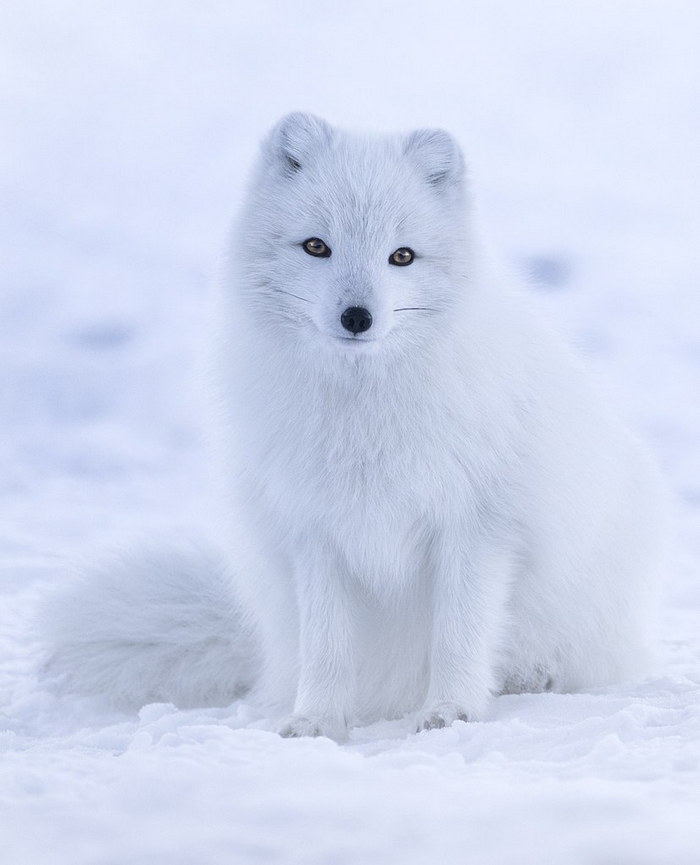
A symbol of resilience and adaptability, the Arctic fox thrives in some of the harshest conditions on Earth. This fluffy mammal sports a brilliant white coat in winter, allowing it to blend seamlessly with snow-covered landscapes. But as seasons change, so does its fur, adopting a grayish-brown hue during the warmer months.
Surviving in the tundra isn’t easy, but the Arctic fox has a series of remarkable adaptations. Their round, compact bodies minimize the surface area exposed to cold air, and their keen sense of hearing helps them locate prey beneath thick layers of snow.
Despite their hardiness, climate change poses a significant threat. As temperatures rise and ice melts, their natural habitats are shrinking. This shift has also seen the red fox, a relative and competitor, move into the Arctic fox’s territories.
Efforts by wildlife conservationists are ongoing to monitor and protect these foxes, ensuring they continue to grace the Arctic tundra with their presence and play their crucial role in the ecosystem.
05 – Pangolin
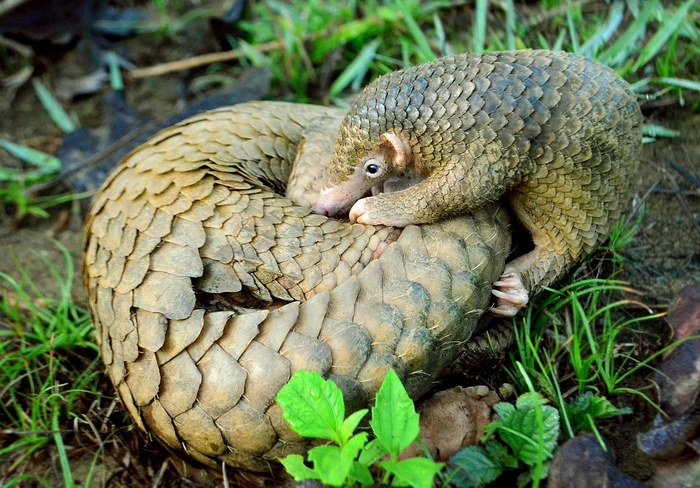
Often described as a walking artichoke or a modern-day dinosaur, the Pangolin is an extraordinary mammal known for its protective keratin scales. Nocturnal and elusive, pangolins are insectivores, primarily feeding on ants and termites, which they extract using their long, sticky tongues.
These creatures are unique not just in appearance but also in movement. When threatened, a pangolin will roll into a tight ball, its sharp scales serving as a formidable defense against predators. This defensive mechanism, however, is sadly ineffective against their biggest threat: humans.
Regrettably, pangolins are among the most trafficked animals in the world. Their scales are sought after in traditional medicine, and their meat is considered a delicacy in certain cultures. This heavy poaching, combined with habitat loss, has led several pangolin species to the brink of extinction.
However, there’s hope. Global awareness about the plight of the pangolin has been growing. Conservation initiatives and stricter wildlife trade regulations are being put in place to save these enchanting creatures from disappearing forever.
04 – Hispaniolan solenodon
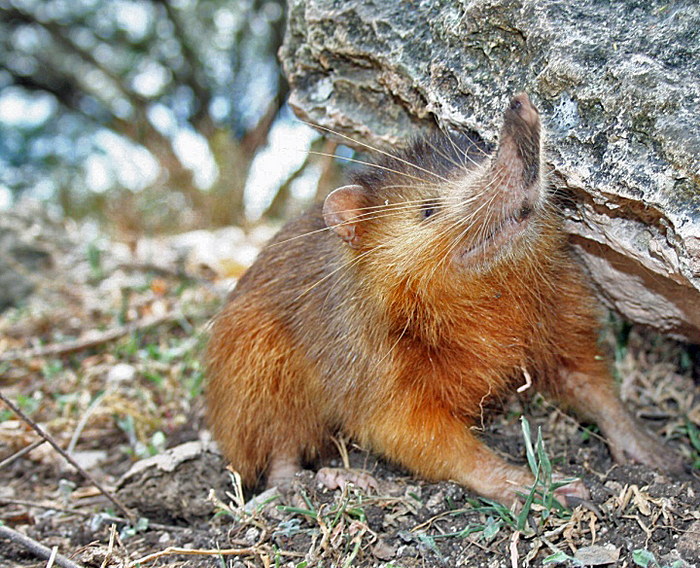
The Hispaniolan solenodon, a small nocturnal mammal, is truly a relic from the past. Found in the Dominican Republic and Haiti, this unique creature resembles a shrew but has a lineage that dates back millions of years. With its long snout and distinctive venomous saliva, it’s a marvel of evolutionary quirks.
Despite its timid nature, the solenodon boasts a potent weapon against prey: venomous saliva. It injects this toxin through grooves in its bottom two incisors, making it one of the very few venomous mammals on Earth.
However, this evolutionary marvel is under threat. The arrival of invasive species and human encroachment has significantly impacted the Hispaniolan solenodon’s natural habitat. Conservation efforts, including habitat restoration and public awareness campaigns, are essential in safeguarding this living fossil from extinction.
03 – Indian Giant Squirrel
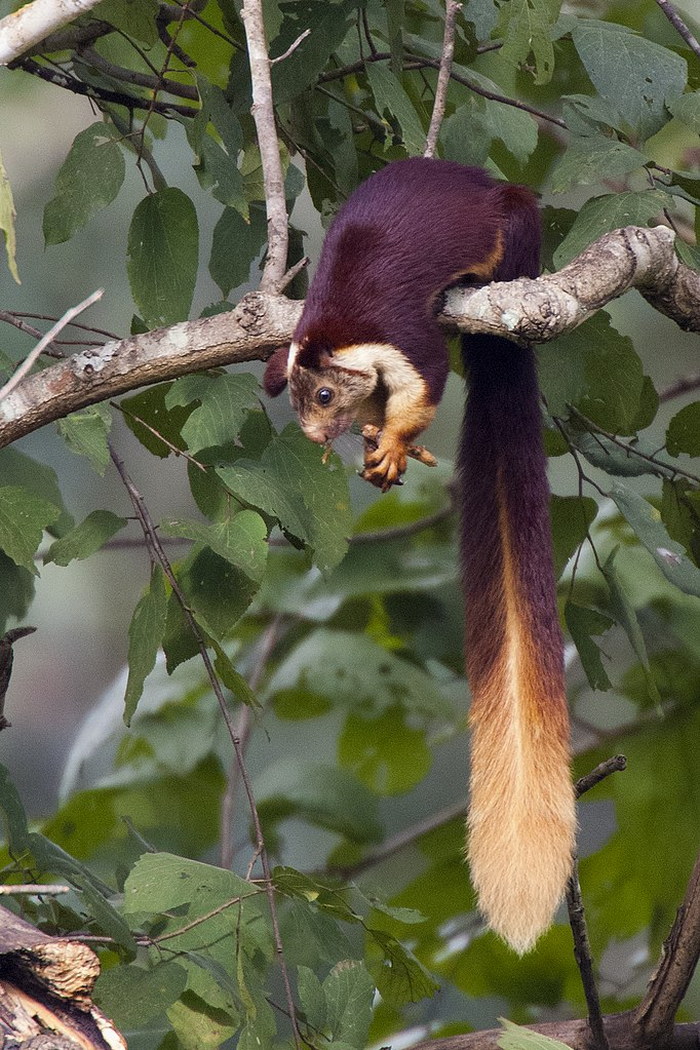
High above the forest floor, amidst the lush green canopy, the Indian Giant Squirrel paints a vibrant picture with its multicolored fur. Also known as the Malabar giant squirrel, this forest acrobat boasts a stunning array of shades, ranging from burgundy and orange to purple and indigo.
Apart from their dazzling appearance, what sets them apart is their size. Growing up to a meter in length, including their tail, they are significantly larger than your average garden squirrel. Their large bushy tail, almost twice the length of their body, aids in balancing and steering as they leap from tree to tree.
Yet, despite their size and vibrant colors, they remain elusive, often hiding high in the treetops. Deforestation and habitat fragmentation have pushed these squirrels into ever-shrinking territories, making conservation efforts crucial for their continued existence.
02 – Mountain Bluebird
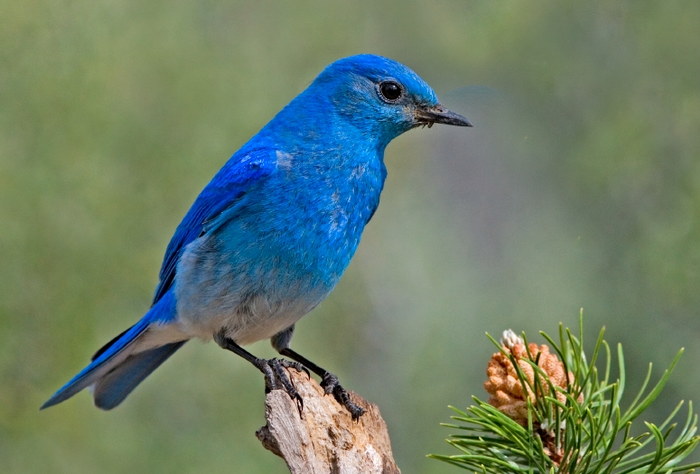
A splash of brilliant blue against the backdrop of mountain meadows, the Mountain Bluebird is a sight to behold. This small, vibrant bird, native to North America, is known for its azure plumage and melodious songs, making it a favorite among birdwatchers and nature enthusiasts.
Though primarily insectivores, their diet can shift based on seasonal availability, sometimes including berries and other small fruits. During courtship, males can often be seen performing impressive aerial displays to woo potential mates.
Yet, as serene as their existence might seem, challenges abound. Changes in land use, extreme weather conditions, and competition with other species like the invasive European Starling have influenced the Mountain Bluebird’s habitats and nesting sites. Conservationists are working on understanding these challenges better, ensuring these blue wonders continue to grace our skies.
01 – Caracal Cat
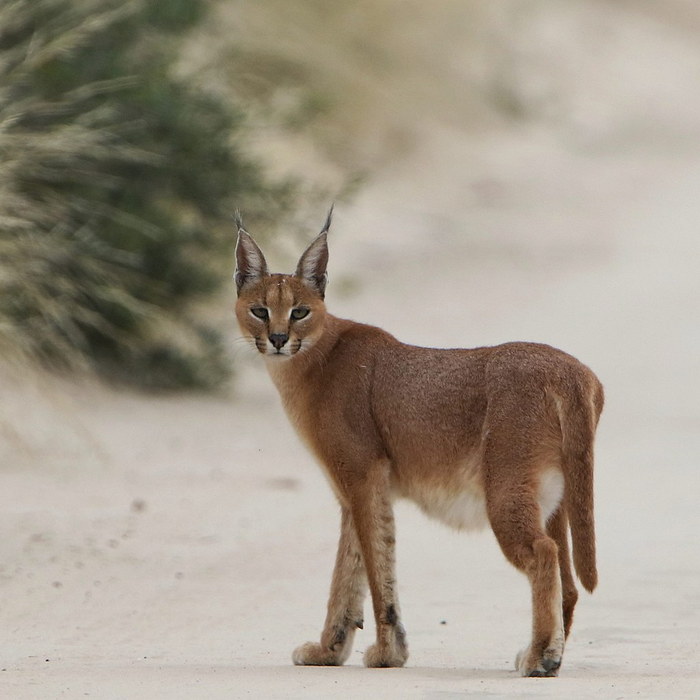
Hailing from Africa’s vast savannas to the Middle Eastern deserts, the Caracal Cat stands as a true testament to nature’s splendor. With tufted ears, golden eyes, and a sleek, muscular body, this feline is nothing short of majestic. But, don’t let their beauty fool you. Caracals are fierce predators, often seen launching themselves into the air, intercepting birds in a single, graceful leap.
Historically, these cats have been revered in various cultures. Ancient Egyptians, for instance, would depict them in their art and sculptures, while Indian royalty admired the Caracal’s hunting prowess, using them similarly to falcons.
Interestingly, while Caracals are wild creatures, their captivating beauty and temperament have led some to consider them as unusual pets. However, it’s essential to remember that no matter how tame they might seem, their wild instincts remain.
The Caracal’s primary threats today stem from habitat loss, human-wildlife conflict, and occasionally, illegal pet trade. Efforts are being made to educate locals and provide solutions that allow humans and Caracals to coexist harmoniously.
How We Can Safeguard the Jewels of Nature
Our planet’s myriad species, from the commonly seen to the dangerously cute creatures, all have a role to play in the ecological theater. While it’s heartbreaking to see any species inching towards extinction, the good news is that every individual can make a difference. So, how can we protect rare animals and endangered species?
Awareness is the first and crucial step. By understanding the significance of these species and their roles in the ecosystem, we can make informed decisions in our daily lives. Supporting organizations working towards wildlife conservation can be a game-changer. Whether it’s adopting an animal, donating, or even volunteering, every effort counts.
Legislation and stringent laws against poaching, habitat destruction, and illegal trade of rarest animals can deter potential threats. Encouraging sustainable practices, whether it’s in forestry or fisheries, ensures that we exploit resources without compromising the needs of these animals.
Lastly, and perhaps most importantly, habitat restoration can breathe life back into the dwindling numbers of stunning animal species. Replanting forests, restoring wetlands, and even creating urban green spaces can provide the much-needed sanctuaries for these species to thrive.
As we move forward, let us remember that every species saved from the brink of extinction is a testament to humanity’s will to coexist and cherish the wonders of nature.
Why Rare Species Are More Prone to Extinction
Nature’s balance is a fragile thing. Even the slightest alteration can tip the scales in a way that may prove detrimental to certain species. Among the most vulnerable are the rare species. Why are rare species more prone to extinction?
First and foremost, their limited numbers mean they have less genetic diversity, making them more susceptible to diseases. Furthermore, when their habitats get disrupted, even slightly, the consequences for these species can be severe, given they often reside in highly specialized niches. Human interventions, from deforestation to urbanization, have rapidly reduced the living spaces of these rare animal species, pushing them closer to extinction. Climate change, with its erratic weather patterns and habitat changes, further challenges their survival. Lastly, many of these species become targets for poachers, given the high demand for rare animal products in the black market.
As we unveil the rarest animals in the world, it becomes vital to reflect on our role in their plight and the steps we can take to safeguard their existence.


